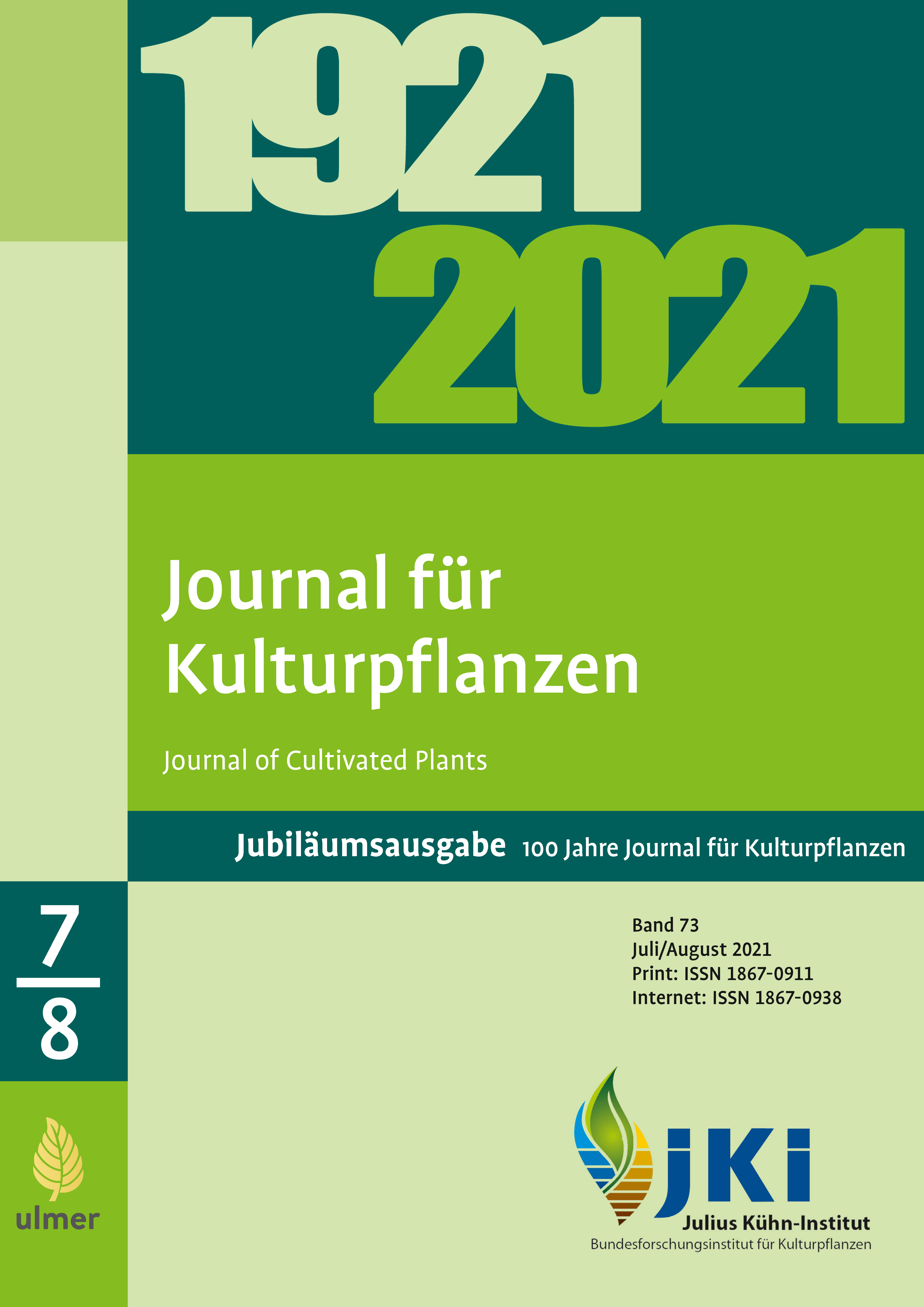Fruit and grapevine breeding in time lapse
DOI:
https://doi.org/10.5073/JfK.2021.07-08.03Keywords:
Obstzüchtung, Rebenzüchtung, dauerhafte Resistenz, Schorf, Mehltau, Schwarzfäule, Botrytis, KlimaanpassungAbstract
Since not many people outlive 100 years, it appears that time stands still during the 20 to 30 years, which is required to develop a new variety in fruit and grapevine breeding. However, a time-lapse will reveal considerable breeding progress with the development of many new cultivars. Although breeding requirements and objectives of recent times are described in different vocabulary, not much has changed from times past. For example, problems of combating harmful organisms (food security, lack of plant protection products) are just as much a focus today (loss of active ingredients and sustainability) as in the past. In addition, breeding for climatic adaptation in the past (for earlier maturity, for example) is same as today, only (at least for grapevine) the goal is reversed for late maturity traits.
In the wake of the ‘Green Deal’ with its ‘Farm to Fork Strategy’, the EU has set ambitious goals and long overdue targets for achieving ‘green agriculture’ with minimization of negative impacts on the natural environment. The ambitious goal of halving the use of pesticides requires adaptation of all farming systems, especially for pesticide-intensive crops such as orchards and vineyards. These crops also represent in a special way a cultural landscape with high economic power through local recreation and tourism.
Ambitious goals can only be achieved by implementing innovations. However, given the transformation goals towards sustainability, individual entrepreneurial innovation is not enough to achieve the ambitious goals. Thus, a systemic approach to innovation is required. In a system that has previously experienced huge success, there are sometimes tendencies to not innovate. Nevertheless, the current and future challenge is clear: climate change is forcing breeding for climatic adaptation that will ultimately lead to variety change. This situation presents an opportunity for new robust varieties.
Downloads
Published
Issue
Section
License
Copyright (c) 2021 Henryk Flachowsky, Reinhard Töpfer

This work is licensed under a Creative Commons Attribution 4.0 International License.
The content of the journal is licensed under the Creative Commons Attribution 4.0 License. Any user is free to share and adapt (remix, transform, build upon) the content as long as the original publication is attributed (authors, title, year, journal, issue, pages).
The copyright of the published work remains with the authors. The authors grant the Journal of Cultivated Plants, the Julius Kühn-Institut and the OpenAgrar repository the non-exclusive right to distribute and exploit the work.







